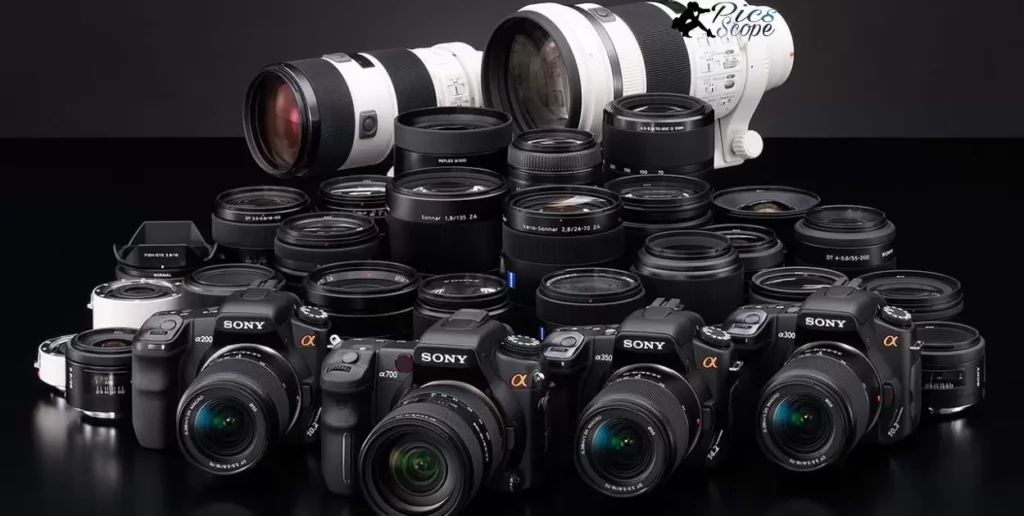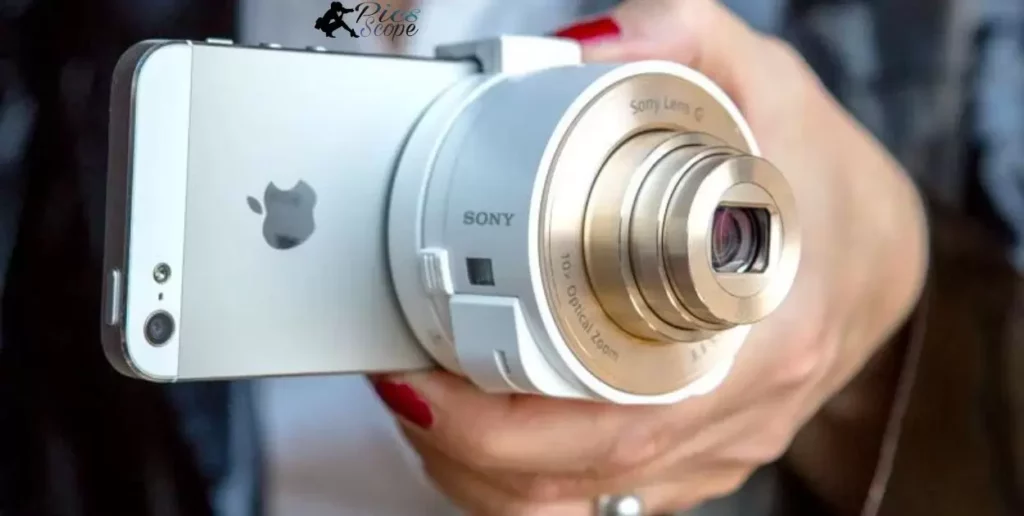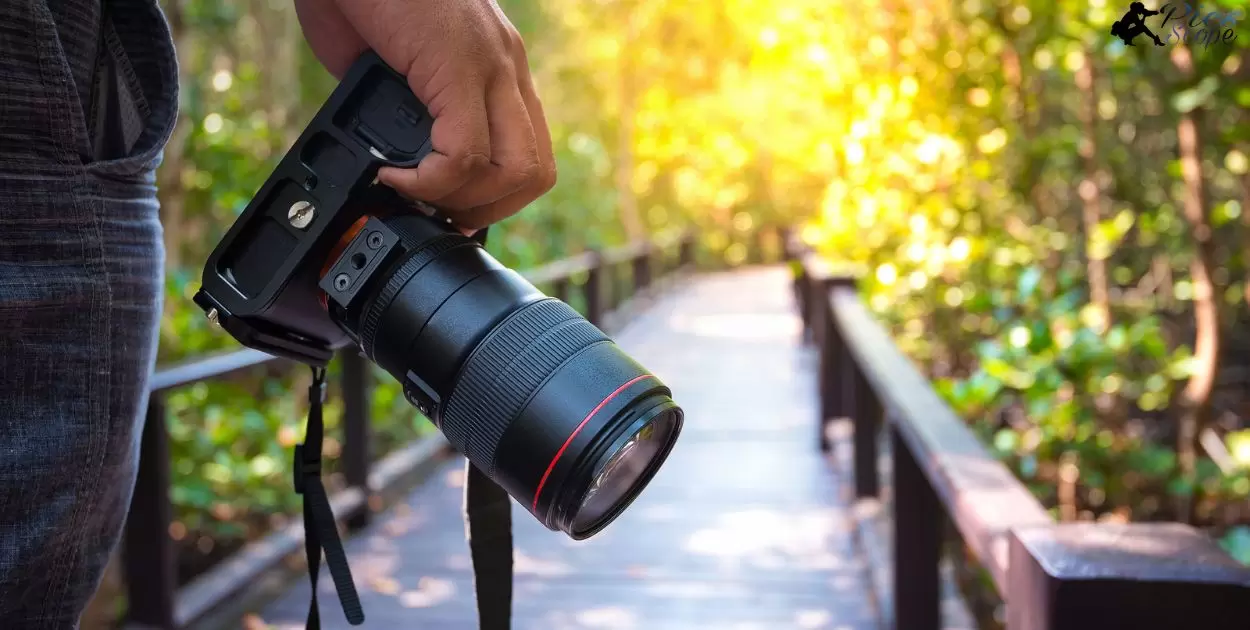Professional Real Estate Photography involves capturing high-quality images for property marketing. It aims to showcase homes and commercial spaces, emphasizing key features and aesthetics. Photographers use their skills to attract potential buyers and create visually appealing representations.
What Camera Do They Use For Professional Real Estate Photography? This question sparks curiosity in those interested in real estate photography. The choice of camera is crucial, considering factors like sensor size, lens quality, and low-light performance. Understanding the equipment used provides insights into the technology behind captivating property images.
In Professional Real Estate Photography, the camera choice is critical for quality images. Photographers often use full-frame digital cameras with high-resolution sensors. Wide-angle lenses capture expansive interiors, while good low-light performance is essential for various shooting conditions.
Factors To Consider When Choosing Cameras And Lenses For Real Estate Photography
Selecting cameras and lenses for real estate photography involves considering factors such as sensor size, lens focal length, low-light performance, dynamic range, resolution, autofocus speed, wide-angle distortion, image stabilization, lens aperture, and the practicality of camera weight and portability.
Sensor Size
The sensor size of a camera is a critical factor in real estate photography. Larger sensors generally capture more light, resulting in better image quality, especially in low-light conditions. Full-frame sensors are often preferred for their ability to produce detailed and high-resolution images, enhancing the overall visual appeal of the property.
Lens Focal Length
The choice of lens focal length significantly influences the composition of real estate photographs. Wide-angle lenses, typically in the range of 16mm to 24mm, are favored for capturing expansive interior spaces and emphasizing room sizes. A versatile lens selection, including options for mid-range and telephoto focal lengths, allows for diverse shots that showcase both the overall property layout and specific details.
Low-Light Performance
Real estate photographers often encounter various lighting conditions, and a camera’s low-light performance is crucial for maintaining image quality. Cameras with good low-light capabilities can capture well-exposed images in dimly lit interiors or during twilight, ensuring that the property is showcased attractively even in challenging lighting situations.
Dynamic Range
Dynamic range refers to a camera’s ability to capture details in both bright highlights and deep shadows. A high dynamic range (HDR) is essential in real estate photography to ensure that exterior views through windows are not overexposed while maintaining clarity in darker areas of the property, creating a balanced and visually pleasing image.
Camera Resolution
Higher camera resolution allows for the capture of finer details in real estate photography. A camera with sufficient resolution ensures that images remain sharp and clear even when zoomed in, providing potential buyers with a more immersive and detailed view of the property.
Autofocus Speed and Accuracy
Real estate photographers often need to work quickly, especially when capturing shots of properties with varying lighting conditions. Cameras with fast and accurate autofocus systems enable photographers to capture sharp images efficiently, ensuring that they can focus on framing and composition without worrying about missed shots due to autofocus delays.
Wide-Angle Distortion
Wide-angle lenses, while excellent for capturing spacious interiors, can introduce distortion, especially near the edges of the frame. Understanding and mitigating this distortion through lens correction techniques or software adjustments is crucial for presenting rooms and spaces in a realistic and visually appealing manner.
Image Stabilization
Image stabilization is valuable in real estate photography, particularly when shooting handheld or in low-light conditions. This feature helps reduce the effects of camera shake, resulting in sharper images. This is especially beneficial when capturing interior shots where a tripod may not always be practical.
Lens Aperture
The lens aperture plays a role in controlling the depth of field in real estate photography. A wide aperture (low f-number) allows more light into the camera and creates a shallow depth of field, useful for emphasizing specific details. On the other hand, a smaller aperture (higher f-number) increases depth of field, ensuring that both foreground and background elements remain in focus.
Camera Weight and Portability
Real estate photographers, armed with a Real Estate Camera 360, often need to move swiftly between different locations. Therefore, the weight and portability of the camera equipment For real estate photographers, armed with a Charge For Real Estate Photography, often need to move swiftly between different locations.
Therefore, the weight and portability of the camera equipment are practical considerations. Lightweight and portable camera setups, like the Canon EOS Rebel series or Nikon D3500, allow photographers to navigate properties efficiently, capturing diverse angles and compositions without being hindered by cumbersome equipment.
What type of camera is most commonly used by real estate agents?

Digital Single-Lens Reflex (DSLR) Cameras
DSLR cameras are widely favored by real estate agents in the United States for their versatility and image quality. These cameras allow agents to capture high-resolution photos with interchangeable lenses, providing flexibility to showcase various aspects of a property. The optical viewfinder and manual controls make DSLRs user-friendly for those with varying levels of photography expertise.
Mirrorless Cameras
Mirrorless cameras have gained popularity among real estate agents due to their compact design and advanced features. These cameras offer excellent image quality, similar to DSLRs, but in a more portable package. Mirrorless systems often include a range of lenses suitable for capturing both wide-angle shots of interiors and detailed shots of property features.
Point-and-Shoot Cameras
For real estate agents seeking simplicity and ease of use, point-and-shoot cameras remain a practical choice. These compact cameras are lightweight, affordable, and convenient for quick property snapshots. While they may not offer the same level of manual control as DSLRs or mirrorless cameras, point-and-shoots are suitable for agents prioritizing convenience and efficiency.
Smartphone Cameras
In recent years, the cameras integrated into smartphones have become increasingly powerful and capable. Many real estate agents in the United States leverage the convenience of their smartphones for quick property photos and on-the-go documentation.
Smartphone cameras are especially useful for capturing property details, and their portability allows agents to share images promptly with clients and on online listings.
Best Affordable Camera For Real Estate Photography
We wil discuss some affordable cameras in above
Canon EOS Rebel T7
The Canon EOS Rebel T7 is a budget-friendly DSLR camera that offers excellent image quality and user-friendly features. With a 24.1-megapixel sensor and reliable autofocus, it’s a solid choice for real estate photography on a budget. The included EF-S 18-55mm lens provides versatility for capturing a range of shots.
Nikon D3500
Another affordable DSLR option is the Nikon D3500. Known for its user-friendly interface and lightweight design, this camera boasts a 24.2-megapixel sensor and a helpful Guide Mode for beginners. The included AF-P DX NIKKOR 18-55mm lens is suitable for a variety of real estate shots.
Sony Alpha a6000
For those interested in a mirrorless option, the Sony Alpha a6000 is a compact and affordable choice. With a 24.3-megapixel sensor, fast autofocus, and a lightweight design, it’s well-suited for real estate photography. Its compatibility with E-mount lenses provides flexibility in lens selection.
Panasonic Lumix DMC-G7
The Panasonic Lumix DMC-G7 is a mirrorless camera offering 4K video recording and a 16-megapixel sensor at an affordable price point. With a variety of compatible Micro Four Thirds lenses, it provides versatility for capturing wide-angle shots and showcasing property features.
Canon PowerShot SX740 HS
For those preferring a compact point-and-shoot, the Canon PowerShot SX740 HS is an affordable option. Despite its small size, it features a 20.3-megapixel sensor, 40x optical zoom, and 4K video recording. It’s a convenient choice for quick and easy real estate snapshots.
Are there any specific features that are important when choosing a camera for real estate photography?
Yes, several specific features are crucial when choosing a camera for real estate photography. These features contribute to capturing high-quality images that effectively showcase properties. Some key considerations include
Sensor Size A larger sensor, such as a full-frame sensor, generally captures more light and provides better image quality. This is important for showcasing the details and features of a property.
Lens Focal Length Wide-angle lenses (typically between 16mm and 24mm) are essential for capturing expansive interior spaces and emphasizing room sizes. The ability to use interchangeable lenses adds flexibility to showcase various aspects of a property.
Low-Light Performance Good low-light capabilities are essential for real estate photography, especially when shooting interiors with varying lighting conditions. A camera that performs well in low light ensures well-exposed and visually appealing images.
Dynamic Range A high dynamic range (HDR) is crucial for capturing details in both bright highlights and deep shadows. This feature helps maintain a balanced exposure, particularly when photographing properties with diverse lighting conditions.
Resolution Higher resolution cameras allow for the capture of finer details, providing potential buyers with a more immersive view of the property. High-resolution images are particularly important for online listings and marketing materials.
Autofocus Speed and Accuracy Fast and accurate autofocus is essential for efficiently capturing sharp images, especially when photographing properties with varying compositions and lighting conditions.
Wide-Angle Distortion Correction Wide-angle lenses can introduce distortion, particularly near the edges of the frame. Cameras with features or post-processing capabilities to correct this distortion help present spaces more accurately.
Image Stabilization Image stabilization is valuable, especially when shooting handheld or in low-light conditions. This feature helps reduce the effects of camera shake, resulting in sharper images.
Lens Aperture The ability to control the lens aperture is important for real estate photographers. A wide aperture (low f-number) allows more light into the camera, while a smaller aperture (higher f-number) increases depth of field, ensuring both foreground and background elements remain in focus.
Considering these features when choosing a camera ensures that real estate photographers can capture stunning and accurate representations of properties, ultimately enhancing their marketing efforts.
Best Camera For Real Estate Photography And Video
Certainly, let’s delve into each of these important features in more detail
Sensor Size
A camera’s sensor size is a critical factor influencing image quality. In real estate photography, larger sensors, such as those found in full-frame cameras, capture more light. This results in clearer and more detailed images, especially in low-light conditions. The increased sensitivity to light allows photographers to showcase the nuances of a property, making it a key consideration when choosing a camera.
Lens Focal Length
Wide-angle lenses are indispensable in real estate photography, enabling photographers to capture the full scope of interior spaces and emphasize room sizes. Focal lengths between 16mm and 24mm are commonly preferred. The ability to use interchangeable lenses provides flexibility, allowing photographers to adapt to different shooting scenarios and effectively showcase various aspects of a property.
Low-Light Performance
Real estate photographers often encounter challenging lighting conditions, particularly when capturing interior shots. Cameras with excellent low-light performance ensure that images remain well-exposed and visually appealing. This feature is crucial for showcasing the warmth and atmosphere of a property even in dimly lit rooms or during twilight hours.
Dynamic Range
The dynamic range of a camera is vital for capturing details in both bright highlights and deep shadows. A high dynamic range (HDR) allows real estate photographers to maintain a balanced exposure, ensuring that exterior views through windows are not overexposed, and interior details are not lost in darkness. This capability contributes to visually striking and well-balanced property images.
Resolution
Higher resolution cameras are advantageous in real estate photography, enabling the capture of finer details. This is particularly important for online listings and marketing materials, where potential buyers often scrutinize images to get a comprehensive view of the property. High-resolution images enhance the overall visual appeal and professionalism of the marketing material.
Autofocus Speed and Accuracy
Real estate photographers need to work efficiently, especially when shooting a series of images in a property. Cameras with fast and accurate autofocus systems enable photographers to focus quickly and precisely, ensuring that every shot is sharp and well-defined. This feature is crucial for capturing various compositions and details without missing critical moments.
Wide-Angle Distortion Correction
Wide-angle lenses, while ideal for capturing spacious interiors, can introduce distortion, particularly at the edges of the frame. Cameras with built-in distortion correction features or post-processing capabilities help real estate photographers present spaces more accurately, avoiding the visual exaggeration that may occur with wide-angle lenses.
Image Stabilization
Image stabilization is valuable for reducing the effects of camera shake, especially when shooting handheld or in low-light conditions. This feature ensures that images remain sharp and clear, contributing to the overall quality of real estate photographs. It is particularly beneficial when photographing interior spaces without the use of a tripod.
Lens Aperture
The ability to control the lens aperture is a key aspect of real estate photography. A wide aperture (low f-number) allows more light into the camera, making it useful for highlighting specific details or creating a shallow depth of field for artistic shots.
On the other hand, a smaller aperture (higher f-number) increases depth of field, ensuring that both foreground and background elements remain in focus, ideal for showcasing entire rooms or exterior views.
Considering these features collectively ensures that real estate photographers can select a camera, such as the Real Estate Camera 360, that aligns with the specific demands of their work. Each feature contributes to the overall capability of the camera to capture stunning and accurate representations of properties, ultimately enhancing the visual appeal of real estate listings.
Best Budget Camera For Interior Photography
The best budget camera for interior photography combines affordability with quality, and options like the Canon EOS Rebel T7, Nikon D3500, or Sony Alpha a6000 provide excellent image capabilities without breaking the bank.
Canon EOS M50 Mark II
The Canon EOS M50 Mark II is a mirrorless camera that strikes a balance between affordability and performance. With a 24.1-megapixel APS-C sensor and a versatile autofocus system, it’s suitable for capturing detailed interior shots. The compact design and vari-angle touchscreen add to its appeal for interior photography.
Nikon D5600
The Nikon D5600 is an entry-level DSLR camera known for its affordability and ease of use. With a 24.2-megapixel sensor and a fully articulating touchscreen, it provides a good combination of image quality and flexibility for interior photography. The D5600’s compact size makes it convenient for capturing shots in confined spaces.
Sony Alpha a5100
The Sony Alpha a5100 is a compact mirrorless camera with a 24.3-megapixel APS-C sensor. Its small form factor and flip-up touchscreen make it easy to handle, making it a suitable option for capturing interiors. Fast autofocus and Full HD video recording add to its capabilities for budget-conscious photographers.
Panasonic Lumix G7
The Panasonic Lumix G7 is a mirrorless camera that offers 4K video recording and a 16-megapixel Micro Four Thirds sensor at an affordable price. It’s a versatile option for interior photography, providing flexibility in capturing wide-angle shots and details. The articulating touchscreen enhances usability in various shooting scenarios.
Fujifilm X-T200
The Fujifilm X-T200 is a mirrorless camera with a 24.2-megapixel APS-C sensor and a lightweight design. Known for its film simulation modes and user-friendly interface, it’s a budget-friendly option for interior photography. The vari-angle touchscreen and electronic viewfinder contribute to its versatility.
These budget-friendly cameras offer a combination of features suitable for interior photography, allowing photographers to capture the nuances of indoor spaces without compromising on image quality.
Choosing a Lens for Real Estate Photography
Selecting the right lens for real estate photography is crucial. Wide-angle lenses, like the Canon EF 16-35mm or Nikon AF-S 14-24mm, are popular choices as they capture more of the room in a single shot. These lenses help showcase the entire space, making rooms appear larger and providing a comprehensive view.
Consider prime lenses with a wide aperture, such as the Sigma 35mm f/1.4 or Canon EF 50mm f/1.8. These lenses allow for better low-light performance and create a beautiful depth of field, drawing attention to specific details in the property.
The key is to balance wide-angle shots for overall room representation with prime lenses for capturing detailed, aesthetically pleasing images, ensuring a versatile and effective lens kit for real estate photography.
Wide-angle Lens
Wide-angle lenses capture more in a single shot, making them ideal for interior photography. These lenses have a shorter focal length, typically below 35mm, allowing you to fit expansive rooms or landscapes into your frame. They minimize distortion, making spaces appear more inviting and enhancing the overall composition of your interior shots.
Wide-angle lenses are practical for emphasizing depth and creating dynamic perspectives. They excel in tight spaces, making small rooms feel more spacious in photographs. Whether you’re showcasing real estate or interior design, a wide-angle lens is a valuable tool for capturing the entirety of a room, providing viewers with a comprehensive and immersive visual experience.
Prime or Zoom Lens?
A prime lens has a fixed focal length, meaning it doesn’t zoom in or out. It’s like having a single, fixed perspective. With a wider aperture, prime lenses allow more light, making them great for low-light conditions indoors. They’re often preferred for capturing sharp, detailed shots of specific features in interiors.
Zoom lenses, on the other hand, offer flexibility by letting you zoom in and out to frame your shot. This versatility is handy when shooting in confined spaces or when you need to quickly adjust your composition. While they might have a slightly smaller aperture, modern zoom lenses still deliver good image quality, making them a practical choice for capturing a variety of perspectives in interior photography.
Lens Speed
Lens speed refers to how quickly a camera lens allows light to reach the camera sensor. A faster lens has a wider maximum aperture, like f/1.4 or f/2.8, enabling it to capture more light in low-light situations. This is beneficial for interior photography, where lighting conditions may vary.
In practical terms, a lens with higher speed, such as the Canon EF 16-35mm f/2.8L III USM Real Estate Camera 360, allows for faster shutter speeds, reducing the risk of blurry images, especially in dimly lit spaces.
Photographers often appreciate lens speed when shooting interiors, as it helps maintain image sharpness and clarity, even in challenging lighting environments. Choosing a lens with good speed is a key consideration for capturing vibrant and well-exposed interior shots without relying heavily on artificial lighting.
Takeaways Lens for real estate photography
When it comes to real estate photography, the choice of lens is crucial for capturing captivating images. A wide-angle lens is a go-to option, allowing you to showcase entire rooms and capture expansive views.
Look for lenses with focal lengths around 16mm to 24mm, as they help create a sense of space and make rooms appear larger, providing potential buyers with a comprehensive view of the property. Consider lenses with low aperture values, like f/2.8 or lower.
These wider apertures enable better performance in low-light conditions, ensuring that your interior shots are well-lit and visually appealing. In summary, opt for a wide-angle lens with a low aperture value to elevate your real estate photography and create impactful visuals that highlight the best features of the property.
Virtual Tour Camera For Real Estate
Virtual tour cameras for real estate are essential tools that allow potential buyers to explore properties remotely. These cameras capture 360-degree images and videos, enabling an immersive online experience. The Ricoh Theta Z1 and Insta360 ONE X2 are popular choices, offering user-friendly interfaces and high-resolution imagery for creating captivating virtual tours.
These cameras are designed with simplicity in mind, allowing real estate professionals to showcase the entire interior of a property with ease. The Ricoh Theta Z1, for instance, boasts dual lenses for seamless 360-degree coverage.
While the Insta360 ONE X2’s FlowState stabilization ensures smooth and professional-looking virtual tours. These user-friendly virtual tour cameras empower real estate agents to enhance property presentations, engage potential buyers, and provide a dynamic online viewing experience.
Can smartphone cameras be used instead of dedicated digital cameras?

Yes, smartphone cameras can indeed be used instead of dedicated digital cameras for many photography needs. Smartphones nowadays come equipped with advanced camera technology, offering convenience and simplicity. They are particularly suitable for casual photography and everyday situations, providing users with a quick and accessible way to capture moments without the need for additional gear.
While smartphones are versatile, dedicated digital cameras still offer unique advantages. Professional photographers often prefer digital cameras for specialized tasks like portrait photography or capturing detailed shots in challenging lighting conditions.
Dedicated cameras provide manual control options and interchangeable lenses, allowing users to tailor their equipment to specific photography requirements. In summary, while smartphones are handy for everyday use, dedicated digital cameras remain valuable for those seeking enhanced control and versatility in their photography endeavors.
Is it necessary for real estate agents to invest in expensive cameras for their listings?
In the world of real estate, having an expensive camera isn’t always a necessity for agents. Many budget-friendly options offer excellent performance for capturing compelling property listings. Cameras like the Canon EOS Rebel T7 or the Nikon D3500 provide a cost-effective solution, delivering quality images without burdening agents with hefty expenses.
Affordable cameras can still meet the needs of real estate agents, especially for interior photography. The Sony Alpha a6000, known for its compact design and user-friendly features, offers a budget-friendly choice without compromising on image quality. Investing wisely in a capable yet affordable camera allows real estate agents to enhance their property listings without straining their budget.
Best Point And Shoot Camera For Real Estate Photography
When it comes to capturing real estate moments without fuss, the best point-and-shoot camera is a game-changer. The Canon PowerShot G7 X Mark III is a top pick, offering a compact design and a powerful 20.1-megapixel sensor. With 4K video capabilities and a versatile 24-100mm lens, it’s the go-to choice for real estate professionals seeking simplicity and stunning results.
Another contender in the affordable point-and-shoot realm is the Sony Cyber-shot DSC-RX100 VII. Packed with a 20.1-megapixel sensor and a 24-200mm lens, it’s perfect for capturing both wide-angle room shots and detailed property features. The user-friendly interface and quick autofocus make it an ideal companion for those wanting hassle-free yet high-quality real estate photography.
What Camera Do Most Real Estate Photographers Use?
Real estate photographers commonly use cameras that strike a balance between performance and affordability. The Canon EOS Rebel series, like the T7 or T8i, is popular for its user-friendly design and reliable image quality. Nikon’s D5000 series, such as the D5600, is also a go-to choice, offering versatility for capturing both exterior and interior shots.
Mirrorless cameras, like the Sony Alpha a6000, have gained traction among real estate photographers. With their compact size and excellent image quality, they provide a convenient option for capturing detailed shots of interiors. Overall, the cameras preferred by real estate photographers are those that deliver crisp images while being practical for the dynamic nature of property shoots.
FAQ’s
What cameras do estate agents use?
Estate agents often opt for compact and versatile options like the Canon EOS Rebel series or Nikon D3500 for their real estate photography needs.
Which camera lens is best for real estate photography?
The best lens for real estate photography is typically a wide-angle lens, such as a 16-35mm or 10-22mm lens, as it allows photographers to capture expansive interiors and showcase property features effectively.
Which camera is widely used in professional photography?
The Canon 5D series, particularly the Canon EOS 5D Mark IV, is widely used in professional photography, offering high resolution, excellent image quality, and versatility for various genres, including real estate photography.
Conclusion
The choice of a camera for professional real estate photography plays a pivotal role in capturing the essence of properties. The selection of the right camera, such as a full-frame DSLR or a mirrorless option like the Sony Alpha series, ensures that real estate photographers can showcase homes and commercial spaces with clarity and precision.
In the dynamic field of real estate photography, the camera used becomes the storyteller, unveiling the unique features and charm of each property. The integration of advanced technologies and the right features in a camera, tailored to the demands of the real estate industry, empowers photographers to create compelling visual narratives that attract potential buyers and elevate property listings.







